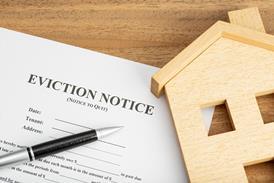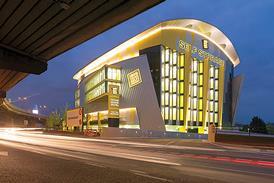Talking up your company’s ‘green’ credentials is now the done thing whatever sector you are in. It helps marketing and makes products look more attractive.Property is no different.
How to take this module
To take this module read the technical article below and click through to a multiple-choice questionnaire, once taken you will receive your results and if you successfully pass you will be issued automatically with a certificate to print for your records.
Developers want to show their buildings use less energy than rivals, and how they perform on rating scales such as BREEAM in the UK, LEED in the US and Canada, and Greenstar in Australia. This should make greener buildings more attractive to potential investors and tenants, because of the corporate social responsibility they demonstrate and the lower operating costs.
The evidence that investors and tenants in the UK will pay more for a sustainable building is limited. Even so, this is an area that poses major challenges for valuers. How much more will investors and tenants in the UK pay for sustainable developments? And how can valuers accurately measure this?
The definition of ‘sustainable development’
The definition of ‘sustainable development’ best recognised by property and the government comes from Brundtland Commission report Our Common Future, published in 1987. ‘Sustainable development’ is defined as “development that meets the needs of the present without compromising the ability of future generations to meet their own needs”.
For example, a commercial building must meet present needs by providing space where tenants can do business. To be called ‘sustainable’ then it should also reduce carbon dioxide emissions as these contribute to climate change and could compromise the needs of future generations.
There is no standard definition for what a ‘sustainable development’ is but it includes factors such as:
- Efficient use of energy in its construction and operation.
- Ability to adapt to impacts of climate change, such as higher temperatures and flooding.
- Proximity to public transport.
Valuers must grapple with those points above to determine how much extra sustainable buildings might be worth. That last point illustrates the difficulty with these issues. It is easy to build a ‘green’ building in an out-of-town location but, if the building is only accessible by car, that undermines those ‘green’ credentials.
What the RICS says
RICS Red Book valuation standard 3.2 says valuers must work out “an estimated amount for which a property should exchange on the date of valuation between a willing buyer and a willing seller in an arm’s-length transaction after proper marketing wherein the parties had acted knowledgeably, prudently and without compulsion.”
In other words, most valuations are based on market value and the valuer will look to market evidence.
In September 2009, the RICS also published its valuation information paper 13 called Sustainability and Commercial Property Valuation to help develop a standardised approach to include sustainability in the valuation process. The most useful statement on that comes from section 2.2.
It says: “In forming a judgment as to the extent to which sustainability factors will impact on valuation, the attitudes of those likely to be in the market for the subject property, both as occupier and owner, are relevant. Often it may be difficult for such factors to be quantified; nevertheless it may fall within the remit of the valuer to provide some qualitative comments.”
This means valuers must inform clients and venture opinions on these issues even if there are no facts and figures to quantify how much extra a ‘green’ building might be worth.
It carried on in section 2.3: “Valuers will need to develop knowledge of such possible implications in order to advise building owners and occupiers, particularly as governments introduce legislation aimed at mitigating the impacts of climate change and reducing carbon emissions. Indeed, it is the responsibility of the valuer to be aware of these trends and be knowledgeable about how they feed through to rental and capital values.”
This makes it clear that valuers must be aware of changing legislation on sustainability issues if they are to advise clients competently. Clients need to know whether the building they are buying today will be hit hard by changes to sustainability legislation in the future.
The facts and figures
The first step for valuers trying to quantify how much extra ‘green’ buildings are worth is looking at is evidence from comparable deals and properties.
The best way to do this would be to look at deals for two buildings in the same location that are the same in every way except for their ‘green’ performance, and compare how much each sold or let for. This would give a fair comparison and show whether investors and occupiers paid more for the ‘greener’ building and, if so, how much. In real life, however, these situations are exceptionally rare.
The upshot is that there is little evidence about whether ‘green’ buildings are worth more than others. The biggest ongoing study is by the Investment Property Databank, which twice a year publishes its Sustainable Property Index Monitor to show how well ‘green’ buildings and others perform financially.
This study is looking at 1,200 properties in more than 100 portfolios, worth £23.1bn in March 2011. At the last count, however, only 484 of these properties had enough data to allow accurate monitoring. So far the IPD data shows ‘greener’ properties performed less well than less sustainable rivals, but warned this should be treated with a “high degree of caution” because of the small sample size.
For valuers, the IPD’s findings so far are probably less significant than the list of companies – including major investor and developers– supporting the project, including ING, F&C Reit, Henderson, Prudential, Legal & General, BlackRock, UBS, Hermes, British Land, Schroder, and The Crown Estate.
This shows there is significant interest in sustainability from property’s major players. For valuers, this indicates the increasing importance of these issues to businesses.
Threat of obsolescence
There is little evidence that ‘greener’ buildings are worth more today. For those valuing properties for annual accounts, therefore, the impact of sustainability on value is, as yet, a non-issue. These valuations are based on prices today and so, as there is no premium being paid for a green building today, sustainability does not need to be factored into these valuations. Even so, the valuer might comment on the sustainability credentials of the property in the same way as they would observe the attractiveness of the location, decorative condition, facilities and so on.
Putting a value on sustainability is a bigger issue for valuations where the valuer must also provide advice about future performance. This mainly refers to valuation advice on acquisitions and for development proposals where the future income stream is modelled as part of the appraisal process.
Earlier, we saw the RICS advising that valuers needed to be aware of future legislative changes and the impact they could have on property values, particularly for buildings with poor ‘green’ performance. This is because government policy means that poorly-performing buildings are at a greater threat of obsolescence than others.
In the UK, buildings are estimated to account for one-third of carbon dioxide emissions. This means there is a major drive to introduce tougher legislation to force improvements in building performance.
Under its Energy Act 2011, the government is looking to outlaw the letting of buildings with either F or G ratings on their Energy Performance Certificates “no later” than 1 April 2018. In November 2011, Property Week reported that this could affect 600,000 buildings in England and Wales.
If your client is planning to buy one of these buildings then they need to be warned that they could become obsolete during or before 2018, or would need a lot of money spent on improving them. The government may also look to extend this rule to properties with better EPC ratings, so those looking at properties with D or E ratings may also need to be warned about potential changes too.
Given the size of greenhouse gas emissions from commercial buildings – more than road transport – there is a strong possibility that future governments will target this sector as the pressure mounts to hit the 80% reduction in greenhouse gas emissions by 2050 required under the Climate Change Act.
Valuers cannot say exactly what is going to happen based on hard numbers, but they can give an idea of what is likely. This should be referred to in valuation reports as not doing so could be construed as negligence, with potentially very serious consequences including legal and compensation claims.
There is also evidence from the US that buildings lose value quicker is they are at greater risk of becoming obsolete. In a report called Sustainability and Dynamics of Green Building, Maastricht University looked at evidence from 21,000 rented buildings and 6,000 sales in the US.
It showed that ‘greener’ buildings have maintained their value better than less sustainable rivals throughout the recession, and reported that ‘green’ buildings in its study had seen no drop in returns during the global economic downturn. It also reported that LEED certified buildings attracted on average rents 5.8% higher than non-certified buildings, and sold for 11.1% more. There is no evidence yet of this trend being replicated in the UK.
Further to this, it suggested that ‘greener’ buildings attract stronger covenants and suffer lower void periods than less-sustainable rivals. Therefore, this suggests that investors looking for long-term performance may be better advised to invest in more sustainable properties, as they are likely to maintain their value better than others.
It should be noted that ‘green’ buildings are not immune from depreciation: the same investigation found that both rental and capital values decline (0.4% and 1.7% pa. respectively). Although the report did not identify the rental decline for other properties one might assume this was steeper. This, clearly, makes sustainability a valuation issue.
Conclusion
There is a metaphor that sums neatly sums up this issue. If a valuer is valuing a building near a cliff edge then they should give an accurate valuation of that building today. However, even if there is no imminent danger to the structure, they would also ask how quickly the cliff is eroding and whether the area has a history of landslide. Although not issues today, these would still have an effect on value.
Valuers must look both at the past and at the future when making valuations. Even if they do not yet have hard facts and figures then they still need to be able to alert clients to potential dangers in areas including sustainability. You may not be able to say what will happen, but you can say what might.
Paul Halford is a tutor in real estate at the College of Estate Management, where his primary responsibility is for teaching valuation.
To take this module read the technical article above and click through to a multiple-choice questionnaire, once taken you will receive your results and if you successfully pass you will be issued automatically with a certificate to print for your records.

Company name: The College of Estate Management
Website: www.cem.ac.uk
CEM is the leading provider of supported distance learning for real estate and construction professionals. We have been playing a key role in the property world for over 90 years. At any one time we have over 4,000 students from more than 80 countries benefiting from our courses - all taught by tutors with extensive industry experience.


























No comments yet